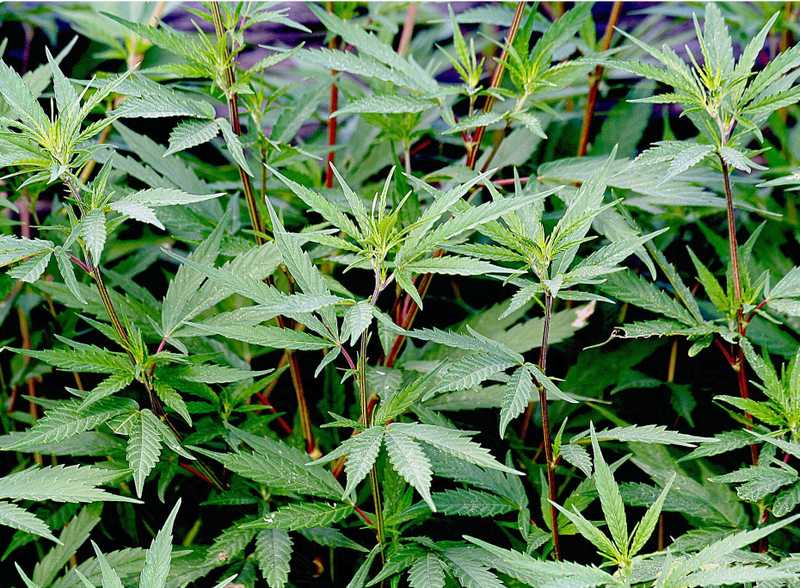So far, in our series for folks new to cannabis, we’ve covered the cannabinoids tetrahydrocannabinol (THC), cannabidiol (CBD) and tetrahydrocannabivarin (THCV). Next up in the queue is tetrahydrocannabinolic acid (THCA). Found in living or fresh cannabis plants, this particular cannabinoid is the precursor to THC. When THCA is heated or ages, it changes into THC. While some folks think of THCA as a compound that’s best used by being converted into THC, others are beginning to see the value this chemical has on its own.
FOLLOW US ON FACEBOOK & INSTAGRAM
Why Do Patients Use THCA?
One of the biggest reasons people like to use THCA is because its non-psychoactive. While THCA can be converted into THC, it doesn’t share any of THC’s psychoactive properties. For patients who want to avoid these effects, but still reap many of cannabis’s benefits, THCA is a great option.
Similar to THC, research shows THCA can help improve a variety of conditions and symptoms. THCA is a powerful anti-inflammatory, making it helpful for many conditions such as arthritis, Parkinson’s disease and Crohn's disease. Research also suggests that THCA acts as a neuroprotectant as well as an anti-proliferate for cancer. It also has anti-emetic properties, which may help patients suffering from intense nausea.
Patients also report that THCA helps ease insomnia, pain and even muscle spasms. With so many conditions the cannabinoid has the potential to help heal, it’s no surprise that THCA’s popularity is growing by leaps and bounds.
Some patients also like THCA because it can offer effects that are both energizing and calming—without the psychoactivity. This combination makes it a great choice for work or other daytime activities where you need to stay sharp. Of course, you’ll want to give THCA a try at home first before you use the cannabinoid at a time when you need to be on top of your game. Experiences vary, and some people say they find THCA to be sedative in nature and better used at night.
RELATED: THE TOP 5 HEALTH TRENDS IN CANNABIS
How Do Patients Use THCA?
There are a few different ways you can consume THCA, but smoking isn’t one of them. Smoking THCA would really just leave you inhaling THC, because THCA converts into THC when heated.
Some folks vape THCA in the form of an extract that looks like a white crystalline powder. That said, it’s hard to say exactly what (if any) temperature would allow a patient to vape only THCA. In most cases, vaporizers are set at high enough temperatures so that they’ll cause the THCA to begin converting into THC. Those who vape may think they’re about to get a dose of non-psychoactive THCA, only to find they’re inhaling mostly THC, the most psychoactive part of the cannabis plant.
Meanwhile, there are a variety of edible products designed specifically around keeping THCA in its raw form. Raw cannabis tinctures, for example, often have high levels of THCA. These tinctures are easy to dose and don’t need to be heated, so they’re a great option for individuals who want to be sure they’re avoiding psychoactive effects whenever they consume THCA.
Another popular way of using THCA is to juice the raw leaves of the cannabis plant or blend them into a smoothie. This method allows patients to get all of the THCA that’s present in the leaves before they dry out. Juicing can be a challenging way to take medicine regularly, because it requires a constant supply of fresh cannabis fan leaves and involves quite a bit of prep each time you juice. You can simplify the process by making a large batch every so often and freezing the juice in ice cubes to use at a later time.
What Are the Drawbacks of THCA?
What some may find as a positive aspect of THCA, others may find to be negative—that’s because everyone’s biochemistry is unique, making each individual react a bit (or very) differently to cannabis. For some, THCA’s effects are too sedative, while for others, it’s too energizing. For a number of folks, THCA’s non-psychoactive effects are considered to be a shortcoming—those who rely on the psychoactive aspect of THC for medicinal reasons find THCA to be much less effective.
Certain methods of consumption can also carry drawbacks. For example, while cannabis juicing has a lot of fans, some may find the cannabis plant a bit harsh to drink. This is because the plant produces substances in its leaves to ward off pests that can feel a bit scratchy to the mouth and throat, and may even trigger allergies in some.
Vaping or cooking with THCA has a downside as well, because it’s hard to know how much of the product has been converted into THC. You may take a dose on one occasion and have a great experience, but then the next time find yourself inhaling a very different dose, one much higher in THC with all of the side effects that come with it—and this because you heated it just a tiny bit too long.
For these reasons, using ready-made products with THCA is likely the easiest and least risky method of taking this cannabinoid. With a variety of THCA tinctures, transdermal patches, edibles and drinks on the market, it should be easy to find something that suits your needs.
In the next installment of our Cannabis for Newbies guide, we’ll review the pros and cons of some of the lesser-known cannabinoids: cannabichromene (CBC), cannabinol (CBN) and cannabigerol (CBG).
Photo credit: Manuel
Need a medical marijuana recommendation? Consult with one of HelloMD’s knowledgeable doctors; it's easy, private and 100% online.
